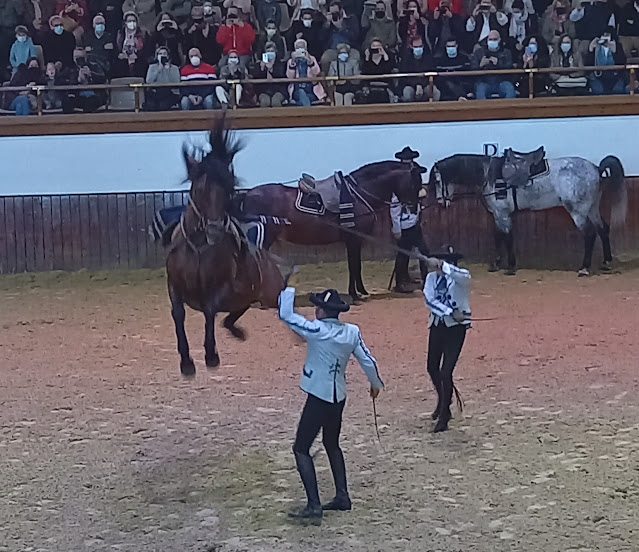My last blog was about the Lipizzaner stallions of Vienna. I saw the world famous Lipizzaner horses perform in Wembley in Nov 2016. In Oct 2021 I was in Vienna and went to the Spanish Riding School stable which was the highlight for me. Then a few days later I was in Budapest and did a tour to a horse centre on the Great Hungarian Plain and saw a show which included the Lipizzaners.
So having seen them in London, Vienna and Hungary, I was happy to see them in their native land in Spain. In Dec 2021 I was in Cadiz in southern Spain and had the chance to go to the Royal Andalusian School of Equestrian Art. This is located in Jerez, not far from Cadiz. Jerez is famous for the horses and also sherry.
The Royal School is famous worldwide for its year-round performances of “How the Andalusian Horses Dance”. The shows are on a Tue and Thur, and last 90 minutes.
I didn't know the difference between Andalusian and Lipizzaner horses. It seems the Andalusian are the breeding stock to create the Lipizzaners and others. The Andalusian, also known as the Pure Spanish Horse or PRE (pura raza española), is a horse breed from the Iberian Peninsula, where its ancestors have lived for thousands of years. The Andalusian has been recognized as a distinct breed since the 15th century, and its conformation has changed very little over the centuries. Throughout its history, it has been known for its prowess as a war horse. It has been used in the development of many other breeds around the world including the Lipizzaner. Can be seen as white, grey or black but other colours also exist.
Before going into the show we had time for a quick look around outside. Several horses were undergoing training.
I took this photo for 2 reasons - firstly the Sandeman name and logo. Sandeman is a brand of Port and Sherry wines founded in 1790. Its well known logo features a caped man named Don dressed in a Portuguese student's cape and a wide Spanish hat. Secondly there is a large nest on top of the chimney. I assume it is a stork nest.


















No comments:
Post a Comment